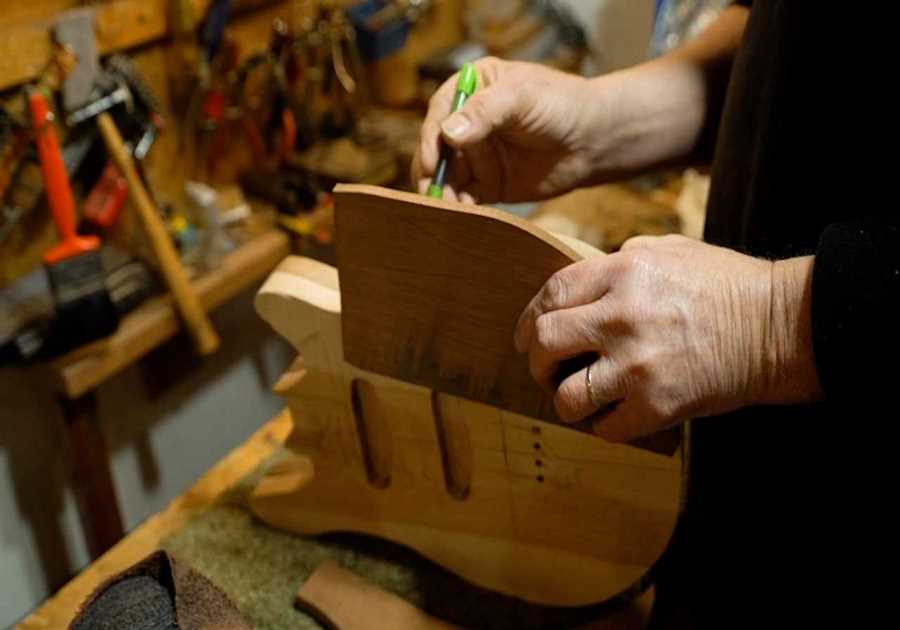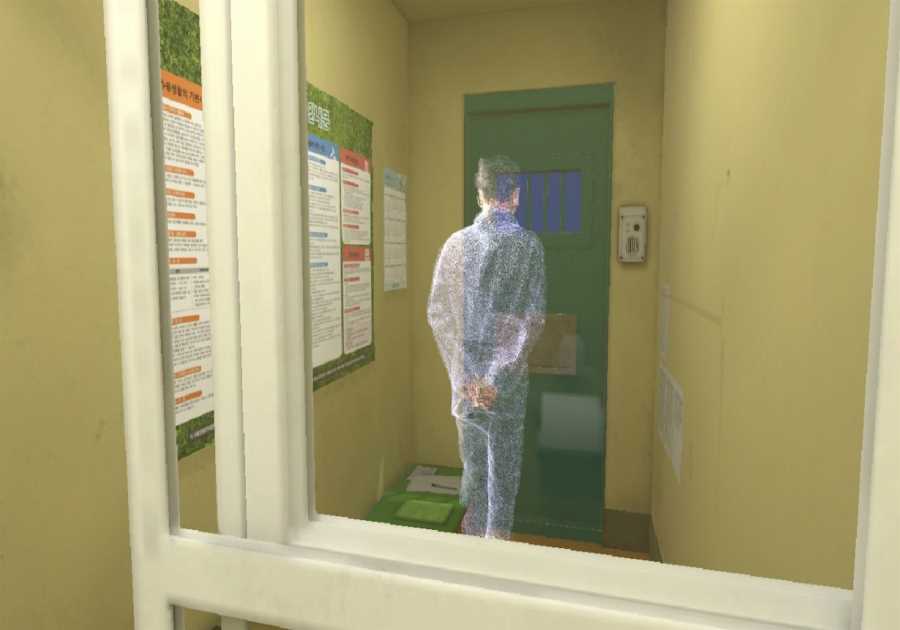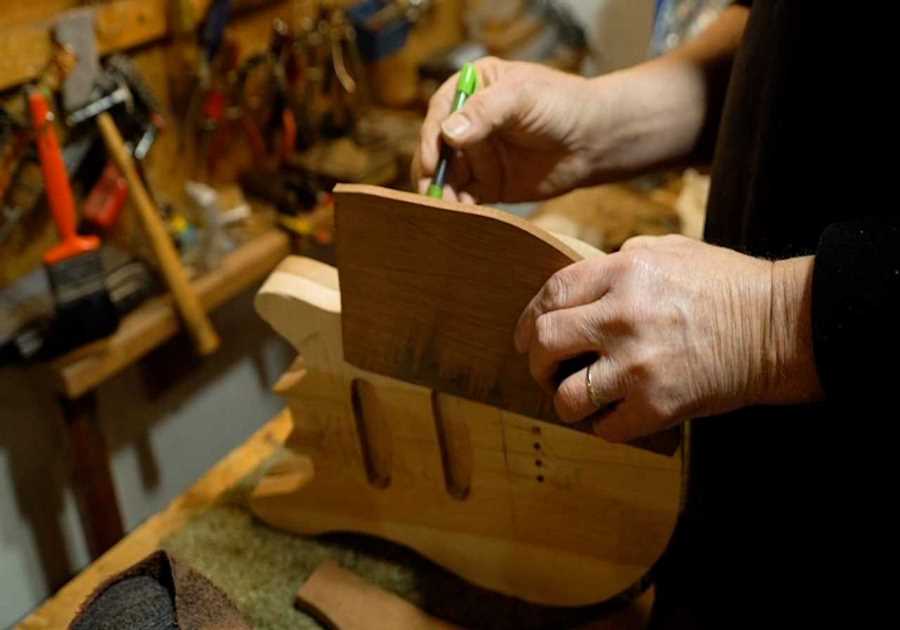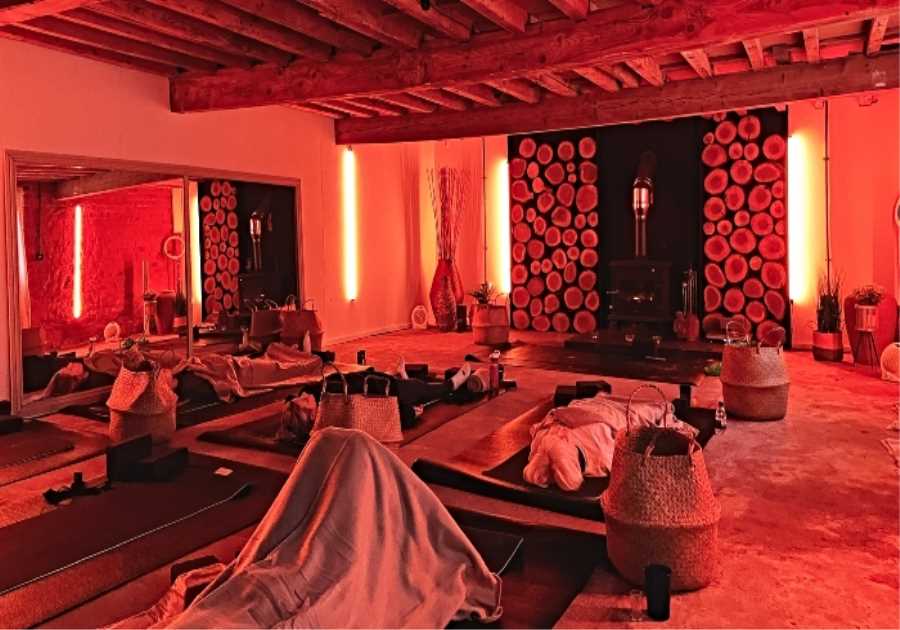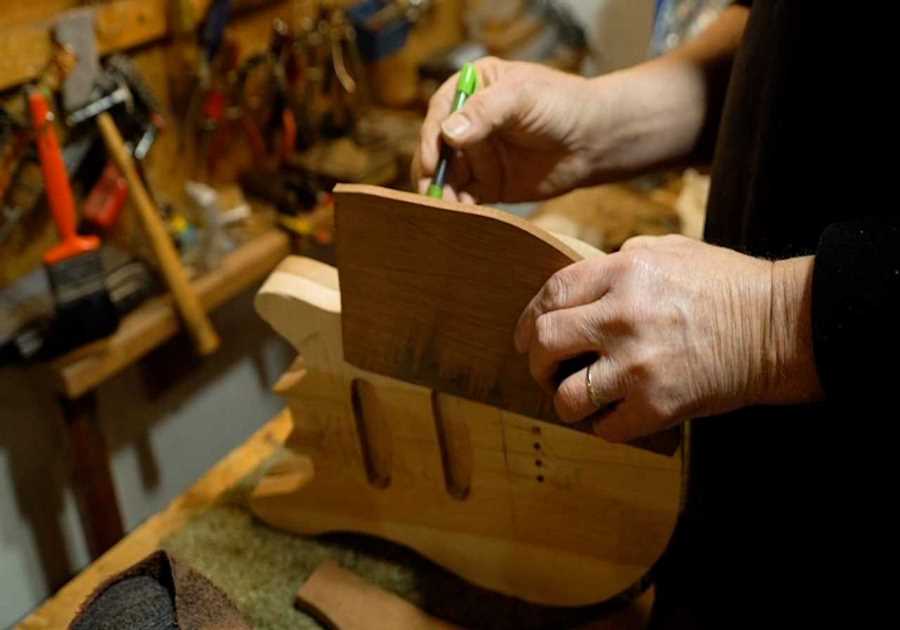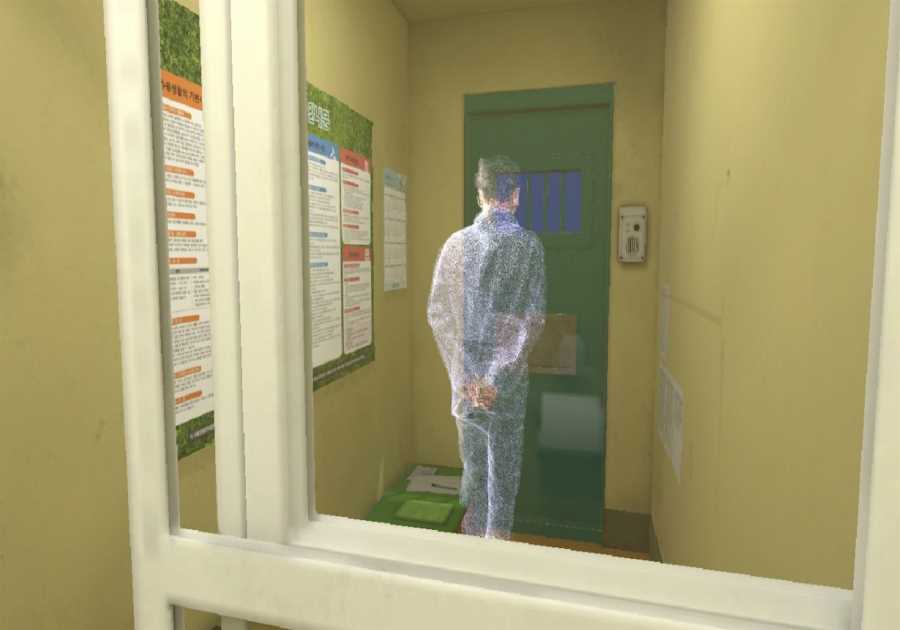Sasana House, consisting of dining room, kitchen, office as well as teacher and staff areas. From bmimc.org.au.jpg
The Blue Mountains Insight Meditation Center (BMIMC) is a Theravada Buddhist retreat center in the small village of Medlow Bath in the upper Blue Mountains, a two-hour drive from Sydney, Australia. It offers residential meditation retreats of various lengths, mostly on weekends or 9-10 days in duration, for up to 18 people. Several month-long retreats are also held throughout the year.
The BMIMC has its beginnings in the early 1980s when several Australians, who had spent some time in Asia practicing Buddhist meditation mainly in the Burmese tradition, returned home and began to invite seasoned lay teachers from the USA to do Satipatthana-Vipassana – Mahasi Sayadaw (1904–82) of Burma carry out retreats in the tradition of recent years. In 1985 Sayadaw U Pandita, one of the world’s leading teachers of this tradition in Burma and successor to Mahasi Sayadaw, came to Australia to teach a month-long retreat. This and all previous retreats took place in rented premises.
After the initial retreat with Sayadaw U Pandita, the demand for opportunities to practice the Mahasi Vipassana style in Australia grew and further retreats were organized, taught by Sayadaw and other renowned Burmese monks, as well as international lay teachers. Several Australian meditators also began leading retreats during this time. As it became more and more difficult to rent suitable and affordable retreat facilities, the interest in buying and setting up one’s own center grew. After a few short-term situations, the property in Medlow Bath was made available with the assistance of two members of the local practice community.
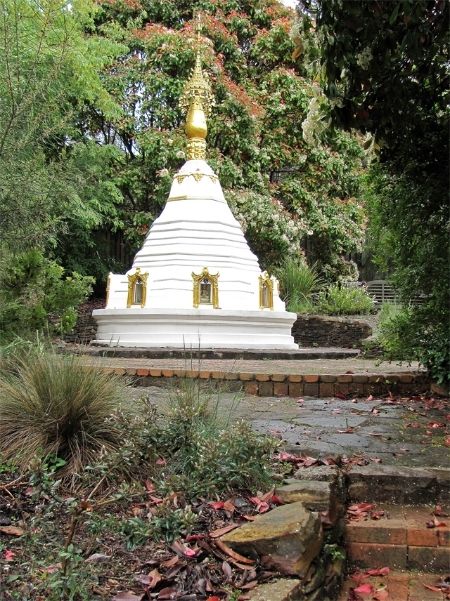
Stupa built and maintained by the Sydney Burmese Community. Image courtesy of the author
The BMIMC has expanded over the years, with facilities updated and evolved as resources became available. This is thanks to the dedication and generous support of many people, including a significant contribution from the Burmese community in Sydney, who are committed to the center so that it now offers a peaceful and comfortable retreat and year-round retreat program. Although Vipassana Meditation is the primary and most important activity of the BMIMC, its association with Burma and the committee members’ relationships with the Burmese community in Sydney has also resulted in participation in two social projects in Burma – financial support for undergraduate medical students and the support and promotion of a monastic orphanage.
The BMIMC was until recently unique in Australia in that it was specifically dedicated to the teaching and practice of Satipatthana Vipassana in the Mahasi tradition (another center is now being built in north New South Wales, operated by a western monastery). It is the only center run by a committee of Western Australian lay meditators associated with a particular Burmese tradition of Theravada Buddhism. Yet while inspiration, respect and awe of the Burmese tradition and its high-ranking monastic teachers have always been and continue to be an integral part of the center’s existence, a natural evolution has taken place as Australian meditators gain more experience and confidence in the practice of meditation and related Buddhist teachings.
This development runs parallel to the story of the idea of ”Western Buddhism” circulating in Western Buddhist communities. At the BMIMC there was initially no clearly articulated intention to develop an “Australian Buddhism”; today this is a directly stated goal. Local culture, attitudes and behaviors have naturally and organically affected the operation and practice culture of the center.
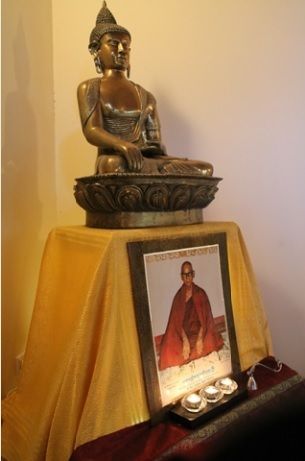
Meditation teaching at the BMIMC is rooted in the tradition of the late Mahasi Sayadaw. From bmimc.org.au
The Mahasi tradition of satipatthana vipassana, as taught by the Burmese monks in its pure form, has three main aspects – a formal sitting practice, a formal walking practice, and a refined, mindful observation of all other activities during the day. For lay practitioners, the Eight Commandments are observed during retreats to provide an ethical foundation and support for meditative mind training, including the Seventh Commandment to abstain from eating after noon. It is customary for the day to start at 4 a.m. and last until 10 p.m., alternating one-hour periods of sitting and walking meditation, only interrupted by the meal breaks and a Dhamma conversation in the early evening. Noble silence is also observed, which means that both verbal and non-verbal communication is restricted; The conversation is limited to regular interviews with the teacher, which are an integral part of a retreat, and brief discussions with caregivers about practical needs that may arise.
However, now a number of lay teachers at the BMIMC, both Australian and international, are offering different and more relaxed formats that may include a less demanding schedule – a shorter practice day and / or lesson time; individual freedom to structure daily practice; a dinner; Group discussions or phases of conversation; Poetry readings during a Dhamma lecture; and some group exercises or physical activities like stretching or a walk in nature.
Aside from these modifications of the more traditional retreat format, the life of a Burmese monk, and especially the elderly monks who have been robed since childhood, couldn’t be more different than that of a Westerner. Just as these monks bring their lifelong disciplined monastic study and training into their teaching style at a retreat, Western teachers bring their individual personality, cultural imprint and life experience to the retreat environment. These color and influence the retreatant’s experience.
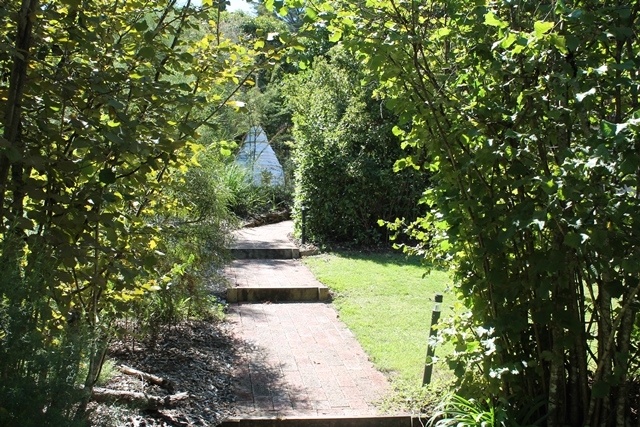
Path connecting the meditation hall to the Sasana house. From bmimc.org.au
What impact these changes will have on the development of the Dhamma at the BMIMC and in Australia is perhaps impossible, or at least difficult to predict. But like the spread of the Dhamma in the Asian world and its adaptation to these cultures, the Dhamma adapts and develops in the cultures of the West. We, the western practitioners of the Dhamma, are transformed through both it and the agents of its change.
For more information on the BMIMC, visit the Blue Mountains Insight Meditation Center website.
Tara Frances is a co-founder and main sponsor of the BMIMC. She has been practicing Vipassana meditation in Burma, Nepal and Australia with Sayadaw U Pandita and other senior teachers for 30 years. Tara was a member of the BMIMC Administrative Committee from the centre’s inception until her six-year tenure as Resident Manager, which ended in November 2010.
Back to the homepage of the special edition of Buddhist Frontiers
Did you miss our previous article...
https://yogameditationdaily.com/meditation-retreats/an-ecodharma-retreat-buddhistdoor-global

